Employment market update: How to ease recruitment difficulty
Quick summary Recruitment/retention difficulty and skills shortages are employer’s greatest concerns over the next three months in relation to recruitment activity Recruitment difficulty increased by 17% over the last two years All industries have seen significant increases in recruitment difficulty including over 70% of manufacturing and construction employers reporting experiencing recruitment difficulty in 2022 Top…
Quick summary
- Recruitment/retention difficulty and skills shortages are employer’s greatest concerns over the next three months in relation to recruitment activity
- Recruitment difficulty increased by 17% over the last two years
- All industries have seen significant increases in recruitment difficulty including over 70% of manufacturing and construction employers reporting experiencing recruitment difficulty in 2022
- Top three reasons for recruitment difficulty were lack of applicants, lack of suitable applicants and undesirable working conditions/hours
- 80% of technicians and trades workers employers, and 72% of labourers employers reported experiencing recruitment difficulty
- ANZSCO Skill Level 1-3 roles were approximately 10% more difficult to fill than ANZSCO Skill Level 4-5 roles
- Many roles had remained unfilled for longer than one month with 52% of technicians and trades workers employers reporting roles being unfilled for over one month
- Time to fill roles correlates with difficulty to fill
If you’re one of the 66% of businesses struggling to fill vacancies within one month, you’d probably agree that lack of candidates is the number one contributing factor.
For the duration of the pandemic, employers were most concerned about COVID and its effects as a factor in influencing recruitment difficulty. Today, and since the beginning of the job boom, recruitment and retention difficulty are at the forefront of many employer’s minds.
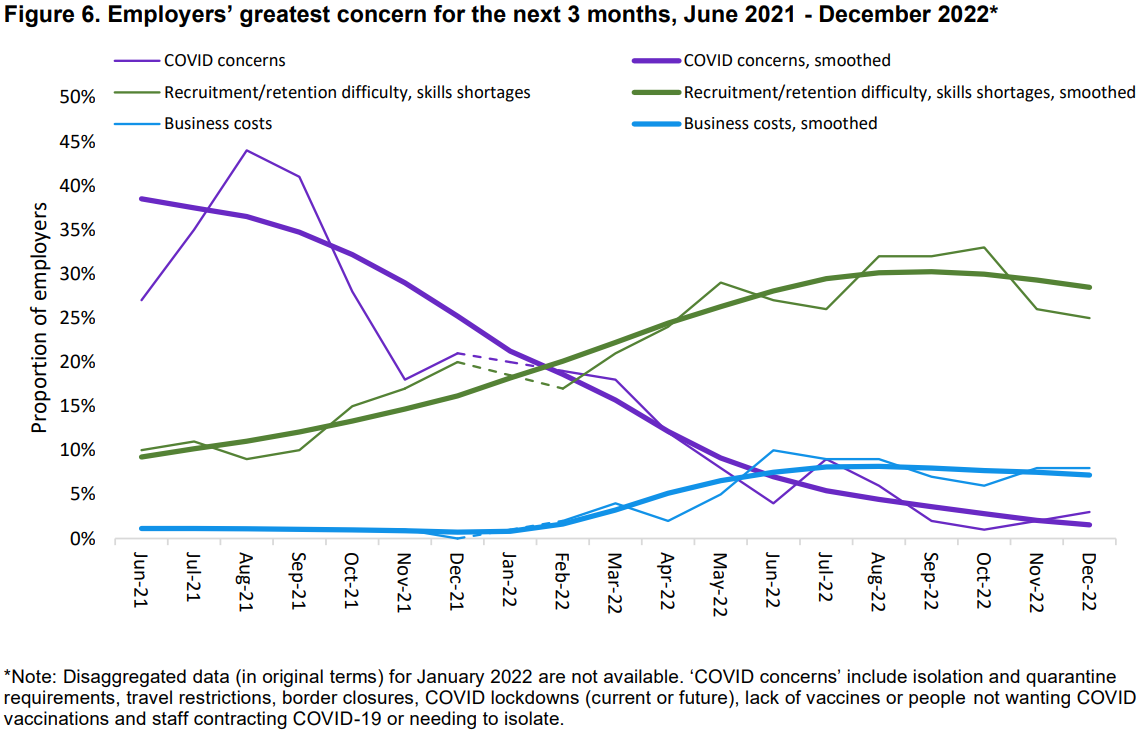
Pre-pandemic, recruitment difficulty floated between 30-50%. From 2020, the difficulty rate had increased by 20% and all industries in Australia have been affected. Specifically, in the last two years alone, recruitment difficulty increased by around 17%, and all industries were affected.
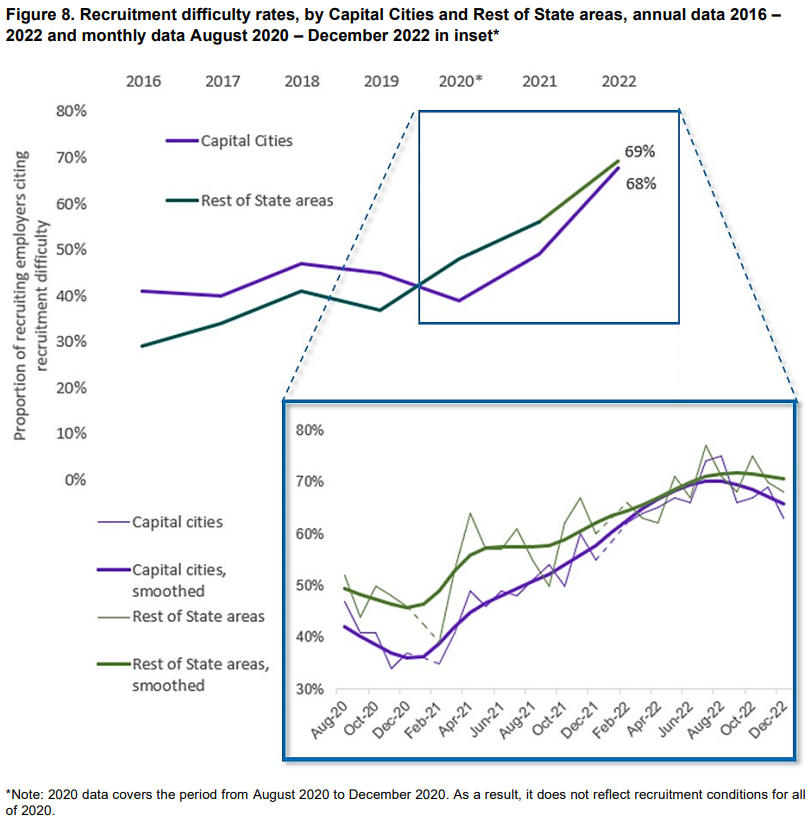
All industries have seen significantly high rates of recruitment difficulty
Over 70% of manufacturing and construction employers reported recruitment difficulty, which is more than other industries. Infrastructure businesses we’ve spoken to have repeatedly experienced significant counteroffers because of the difficulty to hire. Counteroffers proposing $30k-$40k salary increases are common in the current market.
This is not to dismiss other industries where recruitment difficulty also significantly increased over the last two years.
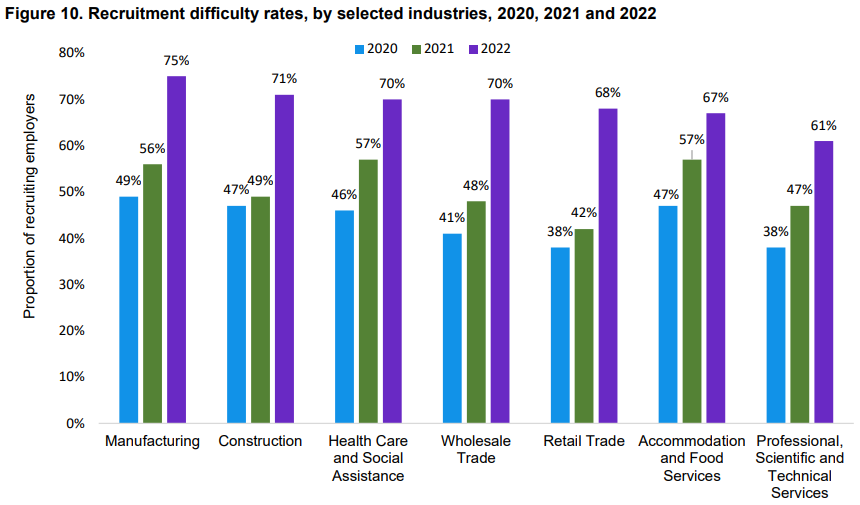
The top reported reasons for recruitment difficulty
Above all else, lack of applicants and lack of suitable applicants was top reason for employers finding recruitment to be difficult.
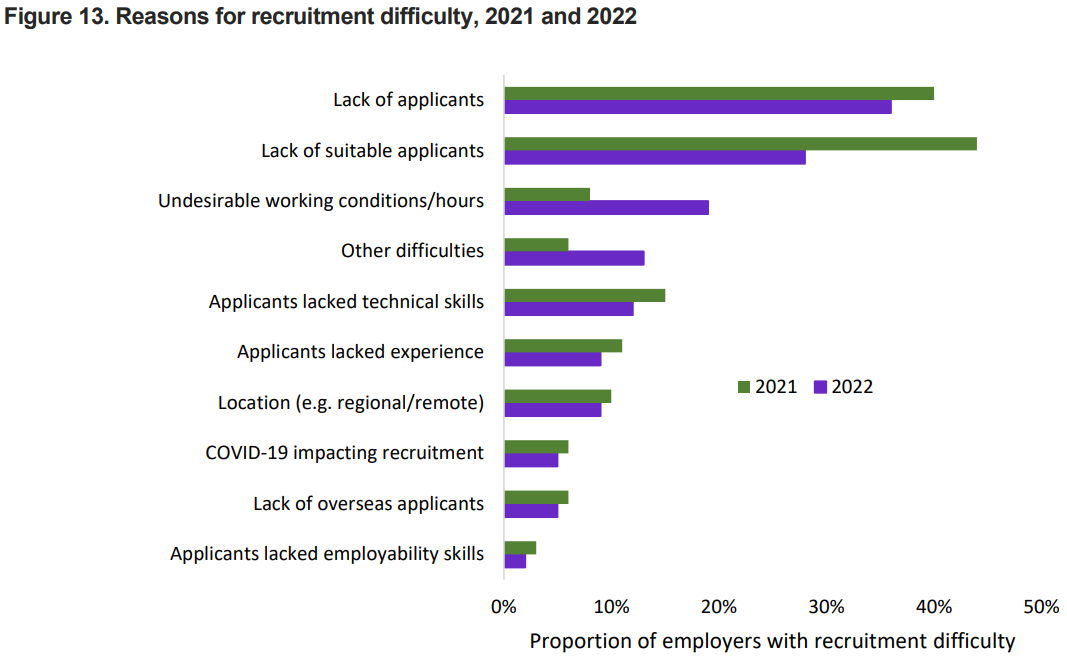
Let’s first discuss the lack of suitable applicants.
Recruitment difficulty varies between role types
When broken down into role types, it is evident that highly skilled roles are significantly harder to fill.
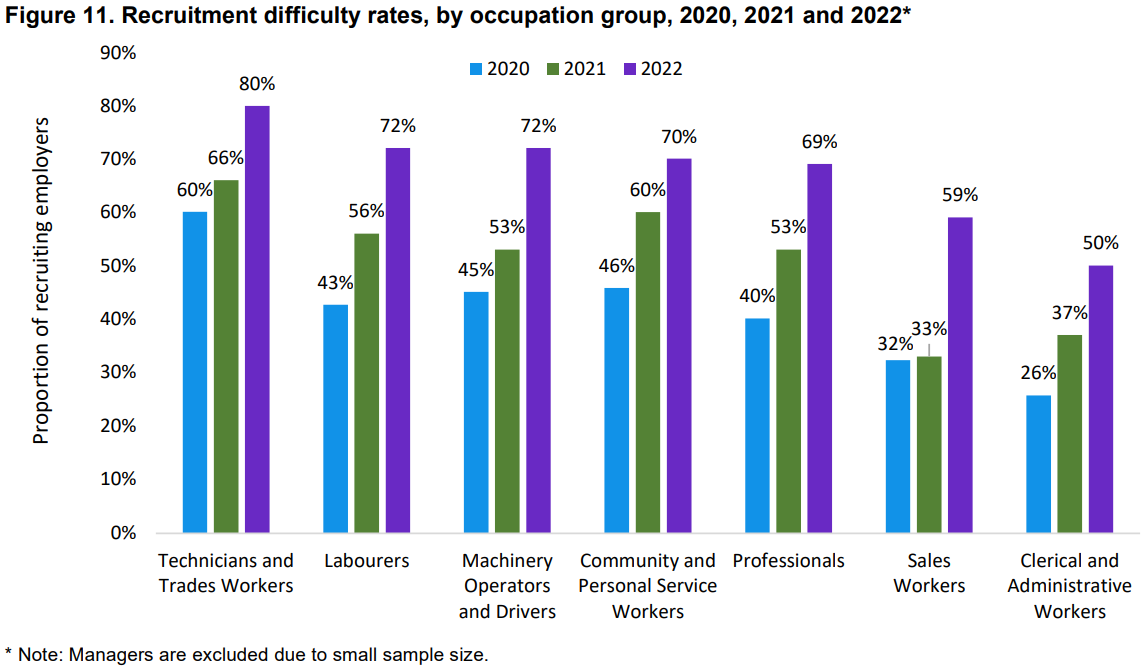
Recruitment for roles with required skill levels 1-3 are approximately 10% harder to fill than lower skilled roles.
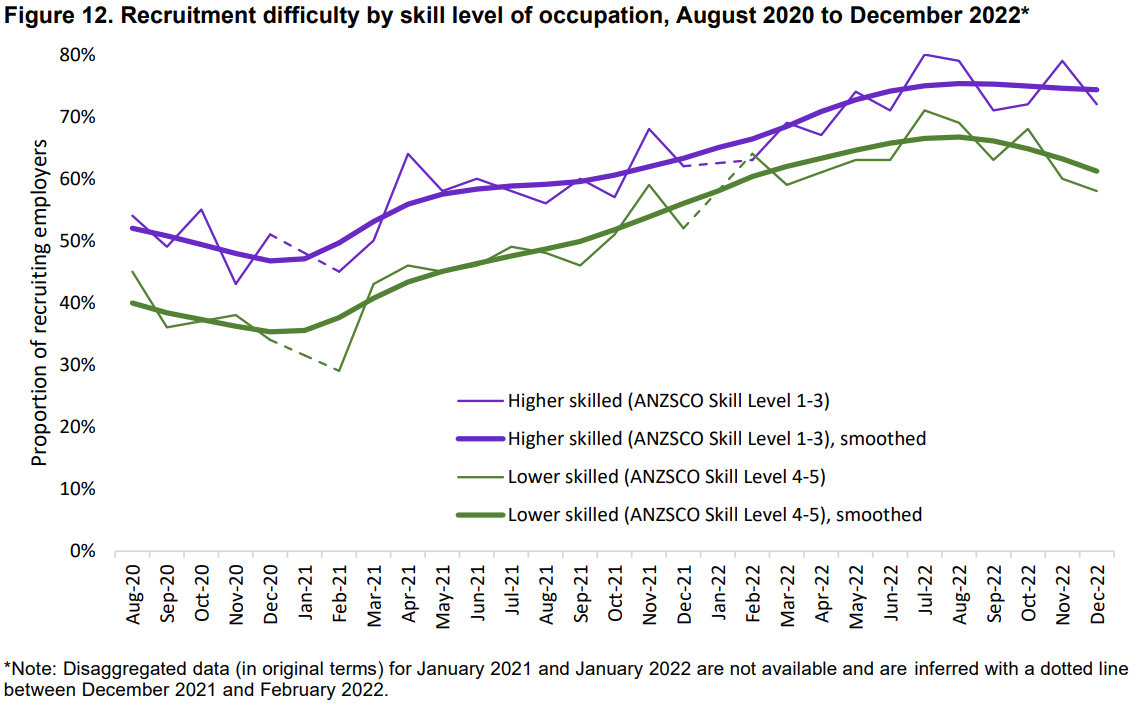
Employers also reported that higher skilled roles have taken more time to fill, with a large percentage of employers still having unfilled roles vacant for over one month.
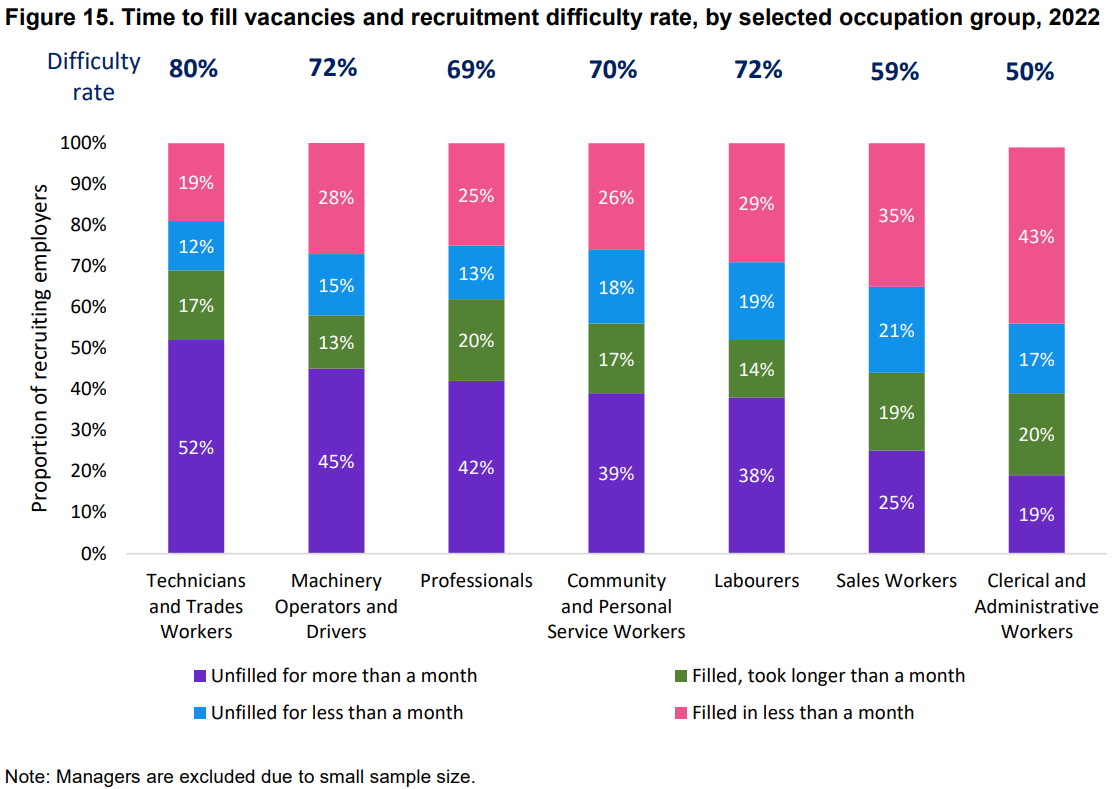
The correlation between ‘time to fill’ and ‘recruitment difficulty’ should be noted by employers expecting to recruit in the near future. The Recruitment Insights Report suggested recruitment difficulty may also be a sign of labour market mismatch where skills and attributes of candidates did not align with employer requirements.
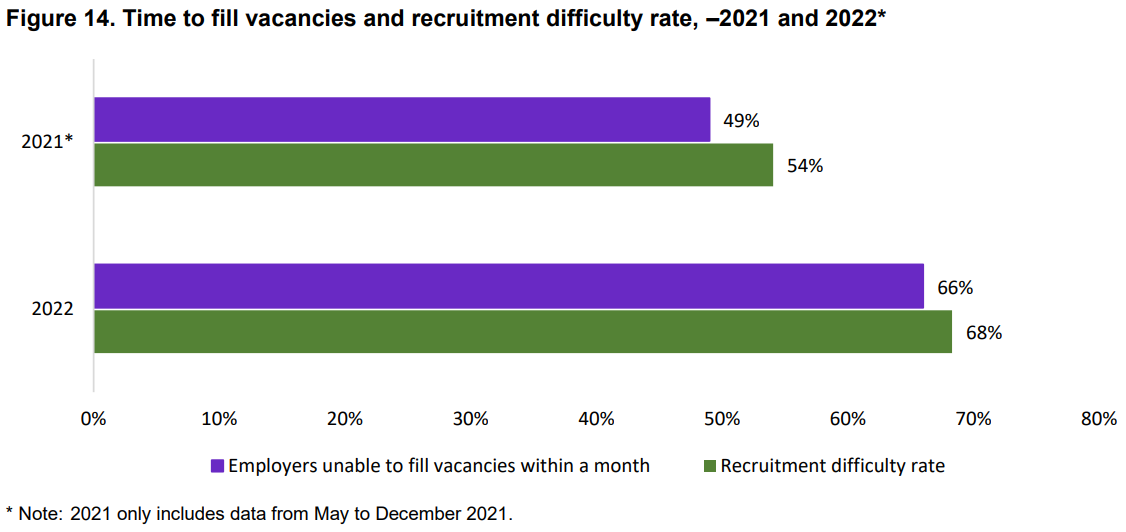
It can’t be helped where skills are in shortage. However, it is common for employers to misjudge the skills and attributes required to successfully perform in a role.
Assess the criteria for candidates before your search
Our recommendation is that employers consider what skills are essential and what are ‘nice to have’. Employers need to list fewer requirements in job ads, only stating the essentials, in order to increase the number of applications they receive.
This is a particularly crucial element in diverse and inclusive hiring processes. Studies have shown that over 40% of women will not apply for a position where they do not meet all requirements listed in a job ad.
Hiring diversly could also be a solution in the construction industry where recruitment difficulty is particularly high and typically represents a male-dominant workforce.
Consider recruiting from within
Another opportunity to combat the difficulty of hiring skilled employees is to consider upskilling and promoting the internal workforce.
Upskilling the current workforce is an effective strategy that prepares a business’s workforce for the future. Upskilling employees to fit with the business’s growth strategy is a way of showing that employers are invested in their employee’s development. Recent surveys have shown that employees are willing to leave their current role for new roles where training and development is offered.
In saying that, training and development is also an effective retention strategy which is a possible solution to the other concern employers have in relation to recruitment difficulty over the following months.
These solutions may help to increase the number of applicants overall; the other concern raised by employers which we will discuss below.
Candidates are applying to less job ads
More and more businesses are realising that simply posting a job ad will not suffice in today’s market. This is reflected in SEEK’s recent employment market trends which reported a decline in both job ads posted and candidate applications.
One possible cause for the drop in candidate applications is the fact that employee priorities had shifted since the pandemic. Australian workers have become more selective in the roles they apply for, being sure to apply for roles that support their self-care goals.
For example, its been seen that candidates have been more likely to apply for roles where working from home is an option. This could be particularly helpful for parents, or those who travel long distances for work.
A quick look at the ‘Reasons for Recruitment Difficulty’ graph above shows that undesirable working conditions/hours was the third most reported reason for recruitment difficulty.
Candidates are now harder to persuade and it’s going to take extra effort for employers to successfully fill vacancies as compared to pre-pandemic.
A proactive approach will bear greater outcomes
Employers hoping to fill vacancies while unemployment rates remain significantly low need to rely on the passive candidate market. A market that is generally untapped due to the demands required to do so successfully.
Over the last few years as the candidate market grew tighter, our teams at Fuse Recruitment have adopted automation and AI technology to communicate with our combined networks to successfully identify well-matched candidates for our clients.
Our industry specialised consultants keep their finger on the pulse of employment trends to ensure they optimise their recruitment strategies for our clients. If you’d like to speak to someone who specialises in your industry, fill in the form on this page and our consultants will get in touch.
If you’re looking for hiring advice in 2023, take a look at our hiring guide below.








